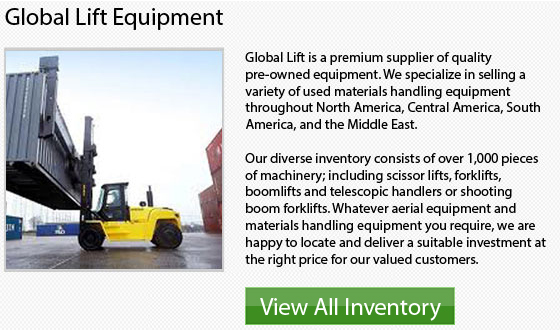
CAT Loaded Container Handlers Fort Worth
The intermodal container can be referred to by other names like a box, high-cube container, ISO container, sea can, freight container, container and conex box. These models are made from standardized reusable steel. They provide effective and safe and secure storage for transporting materials across the world via a international containerized intermodal freight system.
"Intermodal" is a term which refer to the container which could be moved between one kind of transport to another. Intermodal may refer from a ship to truck or ship to rail, without having to reload and unload the container's contents. A few of the container lengths which have a unique ISO 6346 reporting mark on them range from 2.438 m or 8-feet to 56 feet or 17.07m. These units are as high as 2.438 m or 8feet to 9 feet, 6 inches or 2.9 m. It is estimated that there are approximately 17 million intermodal containers of various kinds to suit a variety of cargoes within the world.
These containers could be transported by freight train, semi-truck trailer and container ship. They could also travel many distances without having to be unpacked. At container terminals, they are transferred between modes utilizing container cranes. Often times a reach-stacker is used to transfer from a flat-bed truck to a rail car. These units are secured during transportation by a variety of "twistlock" points situated at every corner on the container.
Every container is equipped with a specific BIC code or bin identification code which is painted on the outside in order to take care of tracking and identification. These models can carry things ranging around 20 to 25 tonnes.
For transport on rails, the container may be carried on well cars or on flatcars. Well cars have been designed specifically for use by intermodal containers. They could safely and efficiently accommodate double-stacked containers. The loading gauge of a rail system can actually limit the kinds of container shipment and the particular modes of the shipment. Like for example, the smaller loading gauges which are typically found in European railroads will only handle single-stacked containers. In some nations like the UK, there are some sections of the rail network that cannot accommodate high-cube containers, unless they could utilize well cars only.
These containers are made strong enough to last through the numerous travels across extreme distances. These containers are reused by companies and are able to transport huge amounts of cargo. These containers are responsible for moving many of the items we rely on everyday around the globe.
- JLG Scissor Lifts Fort Worth
It is the common desire these days for individuals and large businesses to demand environmentally friendly machines. More and more municipalities all around the globe are searching for "green" building concepts for new construction and... More - Manitou Duel Fuel Forklift Fort Worth
Forklift trucks are key pieces of industrial machinery for a variety of businesses and industries. Many thousands of businesses all around the globe would come to a screeching halt if their lift truck was not... More - Manitou Diesel Forklift Fort Worth
Lots of people purchase forklifts so as to make their job easier for them. These industrial machinery specialize in lifting and moving heavy materials. There are many types of forklifts offered on the market today.... More - Potain Self Erect Cranes Fort Worth
Tower cranes are being utilized often for big building construction projects. They are necessary for the heavy lifting and positioning of materials and machinery. Tower cranes provide a different design that offers a lot of... More - Crown Electric Forklift Fort Worth
Lift truck Battery Dangers The best choice of lift trucks for numerous supply outlets or warehouses are electric models that are needed to transport equipment and heavy things into and out off storage. These devices... More








